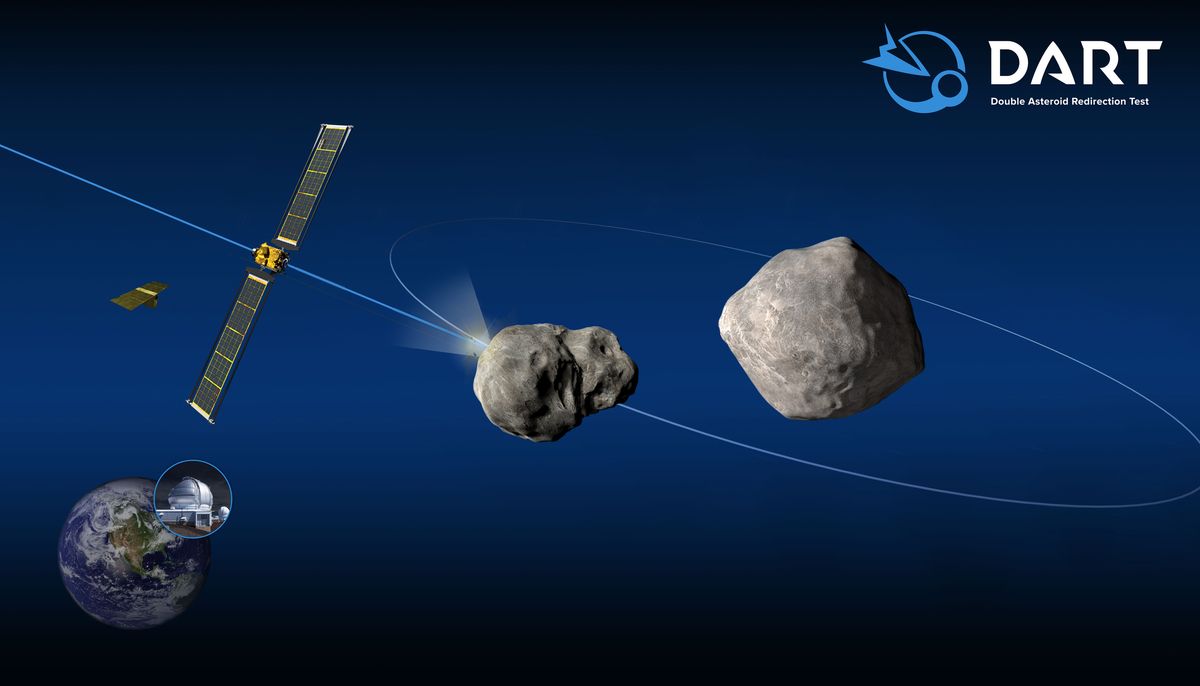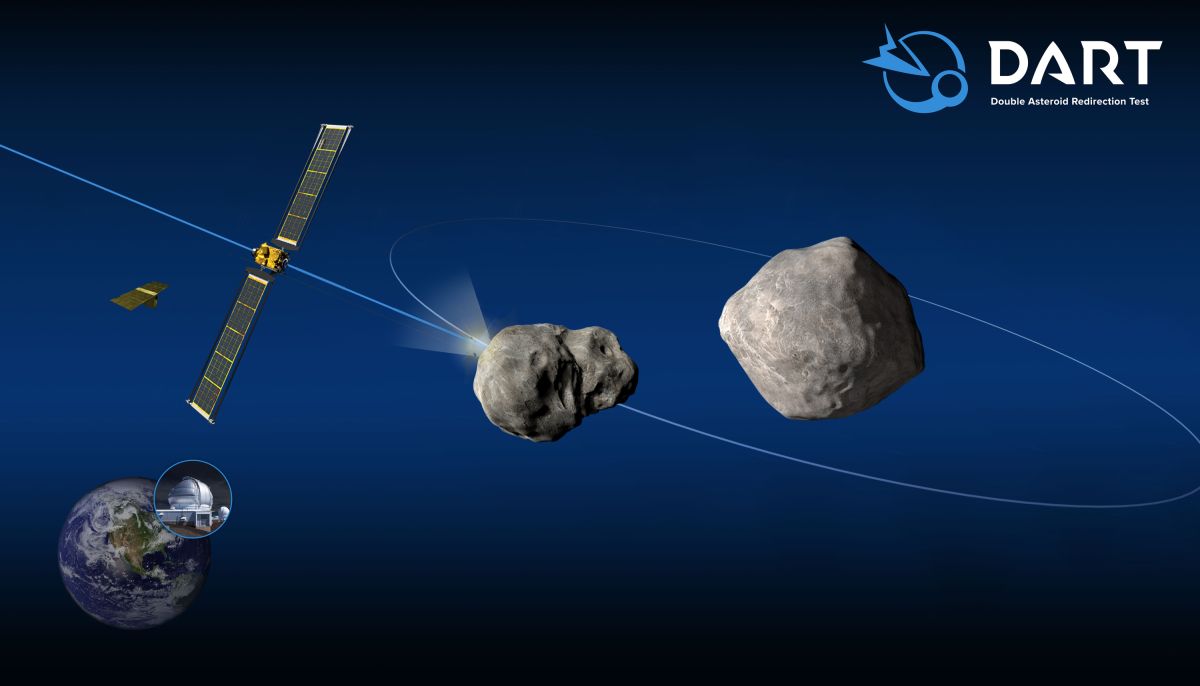
NASA is getting ready to launch a spacecraft to test an experimental method to deflect near-Earth objects, and you can participate in the mission by testing your own planetary defense know-how.
The space agency’s Double Asteroid Redirection Test (DART) mission is designed to test a “kinetic impactor” technique for deflecting any asteroid or comet that might otherwise impact Earth.
The mission, which could launch as early as Nov. 23, is targeting a binary near-Earth asteroid called Didymos and its moonlet Dimorphos. The DART spacecraft will hit Dimorphos head-on in an attempt to move it onto a slightly different path and demonstrate the capability of using this technology to prevent potential impact threats in the future.
Related: Humanity will slam a spacecraft into an asteroid to help save us all
In preparation for the DART mission, you can take a quiz online to determine if you’re ready to become a planetary defender. The five-question quiz tests your knowledge of asteroids, the DART mission and NASA’s Planetary Defense Coordination Office (PDCO), which was established in 2016 to manage planetary defense efforts.
Once you complete the quiz, you’ll receive a digital certification stating you’re ready to be a planetary defender on NASA’s DART mission. You can download your certificate and planetary defender badge to share on social media using the hashtags #PlanetaryDefender and #DARTMission.
The DART mission is slated to launch aboard a SpaceX Falcon 9 rocket on Nov. 24 at 1:20 a.m. EST (0620 GMT, Nov. 23 at 10:20 p.m. local time) from Vandenberg’s Space Launch Complex 4 East (SLC-4E) in California. DART arrived at the Vandenberg Space Force Base on Oct. 2, where it has been undergoing final pre-launch tests and checks ahead of its flight.
Related stories:
Built and managed by the Johns Hopkins Applied Physics Lab (APL) in Maryland, the DART spacecraft will deliberately impact Dimorphos at speeds of 4.1 miles per second (6.6 km/s), or 14,760 mph (23,760 kph), causing the moonlet’s orbital speed to change by a fraction of a percent, in turn changing its orbit around Didymos.
The asteroid system, which currently lies 6.8 million miles (11 million kilometers) from Earth, does not pose any risk to our planet. However, NASA will use ground-based telescopes to observe and measure any differences in the asteroid system following the DART test impact, to assess whether this technology can be used to deflect any potentially hazardous near-Earth asteroids in the future.
Follow Samantha Mathewson @Sam_Ashley13. Follow us on Twitter @Spacedotcom and on Facebook.



